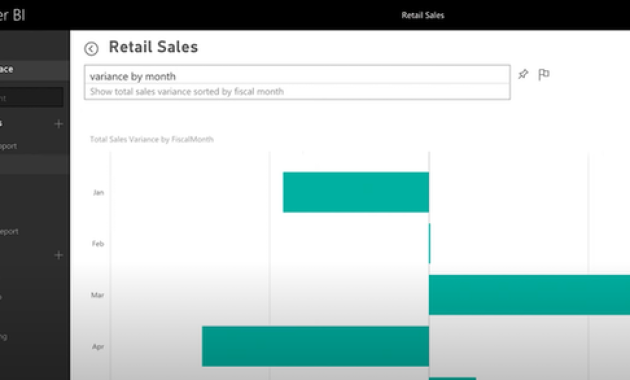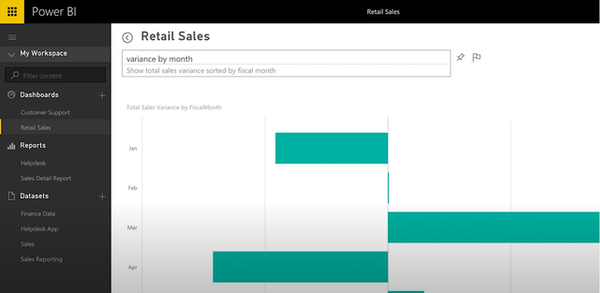
Self-Service Business Intelligence Software: Driving Data-Driven Decisions
The modern business landscape is awash in data. Every click, transaction, and interaction generates information. The challenge lies not in acquiring data, but in extracting meaningful insights from it. This is where self-service business intelligence software steps in. It empowers users to analyze data independently, fostering a data-driven culture and leading to tangible results. This article delves into the power of self-service business intelligence software, exploring its benefits and how to harness its potential for real impact.
Democratizing Data Access: The Rise of Self-Service BI
Traditionally, business intelligence (BI) relied on specialized teams of analysts. These teams would collect, process, and analyze data, creating reports for decision-makers. This process was often slow, costly, and created a bottleneck. Self-service business intelligence software disrupts this model. It puts the power of data analysis directly into the hands of business users. This democratization of data access is a key driver of its popularity. Employees across departments, from marketing to finance, can now explore data, identify trends, and make informed decisions without relying on IT or BI specialists.
Key Features of Effective Self-Service BI Solutions
Not all self-service business intelligence software is created equal. The best solutions offer a range of features designed to empower users. Some key features include:
- Intuitive Interface: A user-friendly interface is crucial. The software should be easy to navigate, with drag-and-drop functionality and clear visualizations.
- Data Connectivity: The ability to connect to various data sources, including databases, spreadsheets, cloud services, and social media platforms, is essential.
- Data Visualization: Robust visualization tools, such as charts, graphs, and dashboards, are necessary to present data in a clear and understandable format.
- Data Preparation: The software should offer tools for data cleaning, transformation, and preparation, allowing users to refine their data before analysis.
- Collaboration: Features that enable users to share reports, dashboards, and insights with colleagues are vital for fostering collaboration.
- Mobile Access: The ability to access data and dashboards on mobile devices allows users to stay informed on the go.
- Security: Strong security features are essential to protect sensitive data.
The Impact of Self-Service BI: Real-World Benefits
Implementing self-service business intelligence software can have a profound impact on an organization. Some of the key benefits include:
- Faster Decision-Making: With immediate access to data and insights, decision-makers can make informed choices more quickly, responding to market changes and opportunities in real-time.
- Improved Efficiency: Automating reporting and analysis frees up valuable time for analysts and other employees, allowing them to focus on higher-value tasks.
- Enhanced Collaboration: Sharing data and insights across departments fosters collaboration and breaks down data silos.
- Increased Data Literacy: Empowering employees to analyze data promotes data literacy throughout the organization.
- Cost Savings: Reducing reliance on external consultants and streamlining reporting processes can lead to significant cost savings.
- Competitive Advantage: Data-driven insights can help organizations identify new opportunities, improve customer experience, and gain a competitive edge.
Choosing the Right Self-Service BI Software: A Strategic Approach
Selecting the right self-service business intelligence software is a critical decision. Organizations should carefully consider their needs and priorities. Here are some key factors to evaluate:
- Data Sources: Ensure the software can connect to all your relevant data sources.
- User Interface: Choose software with an intuitive and user-friendly interface.
- Features: Evaluate the software’s features, such as data visualization, data preparation, and collaboration tools.
- Scalability: Select software that can scale to accommodate your growing data needs.
- Security: Prioritize software with robust security features to protect your data.
- Pricing: Compare pricing models and choose a solution that fits your budget.
- Support and Training: Consider the vendor’s support and training resources.
Conducting a pilot project with a few users can help you evaluate the software before a full-scale rollout. [See also: Choosing the Right BI Software: A Step-by-Step Guide]
Implementation and Adoption: Key Considerations
Successfully implementing self-service business intelligence software requires a strategic approach. Here are some key considerations:
- Define Clear Objectives: Identify your business goals and how the software will help you achieve them.
- Assess Data Readiness: Evaluate the quality and accessibility of your data.
- Provide Training and Support: Offer comprehensive training to users and provide ongoing support.
- Promote a Data-Driven Culture: Encourage employees to use data to inform their decisions.
- Monitor and Evaluate: Track key metrics and evaluate the software’s impact.
- Start Small and Scale: Begin with a pilot project and gradually roll out the software across the organization.
Real-World Examples: How Companies are Leveraging Self-Service BI
Many companies are successfully using self-service business intelligence software to gain a competitive advantage. For instance, a retail chain might use it to analyze sales data, identify top-selling products, and optimize inventory levels. A marketing team can use it to track campaign performance, understand customer behavior, and improve marketing ROI. A financial services company can use it to monitor risk, detect fraud, and improve customer service. These examples demonstrate the versatility of self-service business intelligence software across various industries. [See also: BI Software Success Stories: Case Studies]
The Future of Self-Service BI: Trends to Watch
The self-service business intelligence software landscape is constantly evolving. Some key trends to watch include:
- Artificial Intelligence (AI) Integration: AI-powered features, such as automated insights and natural language query, are becoming increasingly common.
- Cloud-Based Solutions: Cloud-based BI solutions offer greater flexibility, scalability, and cost-effectiveness.
- Mobile BI: Mobile BI solutions are becoming more sophisticated, allowing users to access data and dashboards on their mobile devices.
- Data Governance: Increased focus on data governance and data quality.
- Augmented Analytics: Augmented analytics combines AI, machine learning, and natural language processing to automate data preparation, insight discovery, and data storytelling.
Overcoming Challenges: Common Pitfalls and Solutions
While self-service business intelligence software offers numerous benefits, organizations may encounter challenges during implementation and adoption. Some common pitfalls include:
- Poor Data Quality: Inaccurate or incomplete data can lead to flawed insights. Invest in data cleaning and data quality initiatives.
- Lack of Training: Insufficient training can hinder user adoption. Provide comprehensive training and ongoing support.
- Data Silos: Data silos can prevent users from accessing all the data they need. Integrate data sources and promote data sharing.
- Resistance to Change: Some employees may be resistant to using new software. Foster a data-driven culture and communicate the benefits of the software.
- Security Concerns: Ensure data security and comply with data privacy regulations.
Addressing these challenges proactively can significantly improve the success of your self-service business intelligence software implementation. [See also: Data Quality: Best Practices]
Maximizing Impact: Best Practices for Success
To maximize the impact of your self-service business intelligence software, consider these best practices:
- Establish a Data Governance Framework: Implement policies and procedures to ensure data quality and security.
- Provide Ongoing Training and Support: Offer regular training sessions and provide ongoing support to users.
- Promote Data Literacy: Encourage employees to develop their data analysis skills.
- Foster a Culture of Data-Driven Decision-Making: Encourage employees to use data to inform their decisions.
- Measure and Track Results: Monitor key metrics and evaluate the software’s impact on your business goals.
- Iterate and Improve: Continuously refine your use of the software based on user feedback and business needs.
Conclusion: Embracing the Power of Data
Self-service business intelligence software is a powerful tool for organizations looking to unlock the value of their data. By empowering employees to analyze data independently, businesses can make faster, more informed decisions, improve efficiency, and gain a competitive advantage. By embracing a data-driven culture and implementing the best practices outlined in this article, organizations can harness the full potential of self-service business intelligence software and achieve real impact. The future of business is data-driven, and self-service business intelligence software provides the pathway to success. [See also: The Future of BI: Predictions and Trends]

